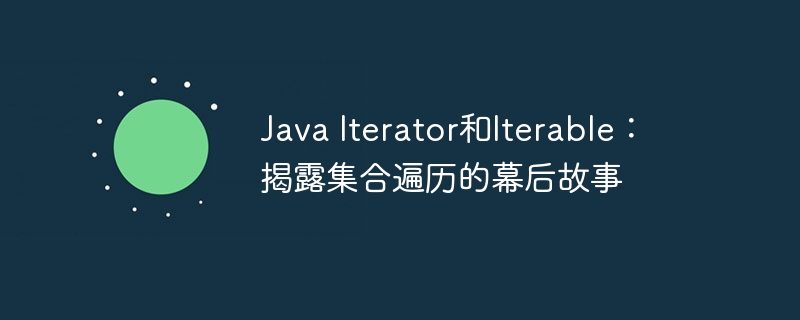

php editor Strawberry takes you to explore the mysterious world of Java Iterator and Iterable, and uncover the story behind collection traversal. These two interfaces play an important role in Java programming. Understanding their principles and functions will help improve your understanding and skill level of collection operations. As we explore together, you will discover the secrets and techniques of set traversal, adding more fun and challenges to your Java programming journey.
The Iterator interface defines methods for traversing collections, including hasNext() and next(). The hasNext() method checks if there are more elements in the collection, while the next() method returns the next element in the collection.
The Iterable interface defines a method for creating an Iterator, the iterator() method. This method returns an Iterator object that can be used to iterate over the collection.
The following is sample code for traversing a collection using Iterator and Iterable:
import java.util.ArrayList;
import java.util.Iterator;
import java.util.List;
public class Main {
public static void main(String[] args) {
// 创建一个List集合
List<String> list = new ArrayList<>();
// 向List集合中添加一些元素
list.add("Java");
list.add("c++");
list.add("python");
// 使用Iterator遍历集合
Iterator<String> iterator = list.iterator();
while (iterator.hasNext()) {
String element = iterator.next();
System.out.println(element);
}
// 使用for-each循环遍历集合
for (String element : list) {
System.out.println(element);
}
}
}In the above sample code, we first created a List collection and added some elements to the collection. We then use an Iterator to iterate through the collection and print out each element in the collection. Finally, we use a for-each loop to iterate through the collection and print out each element in the collection.
Iterator and Iterable are two very important interfaces in the Java collection framework, which allow you to easily traverse the elements in the collection. By understanding the usage of Iterator and Iterable, you can use the Java collections framework more efficiently.
In addition to Iterator and Iterable, the Java collection framework also provides some other tools for traversing collections, such as ListIterator and Spliterator. Each of these tools has its own purpose, and you can choose the appropriate tool to traverse the collection in different scenarios.
The above is the detailed content of Java Iterator and Iterable: Behind the Scenes of Collection Traversal. For more information, please follow other related articles on the PHP Chinese website!
